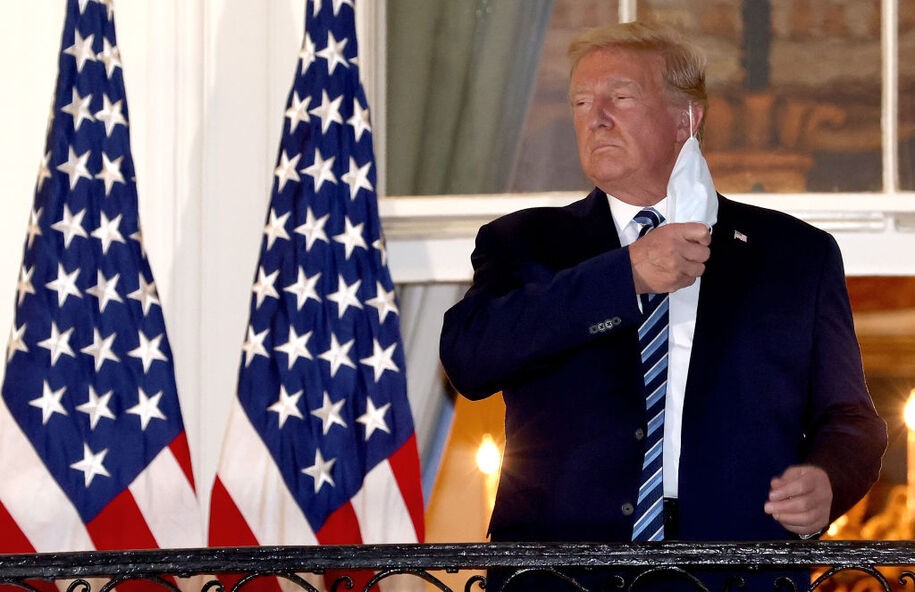
When Vankin uses the term “biological warfare,” it’s easy to think of the claims circulating on the right about how the coronavirus was supposedly engineered in a Chinese lab. But while that theory is strongly disputed by scientists who have examined the evidence, there are definitely other forms of warfare—like that of someone deliberately failing to take action that would save people under his charge, or spreading propaganda with the sure knowledge that it would create a deadly outcome.
What Vankin lays out in his book—from both the actions Trump took to underplay the threat at the outset of the pandemic, to this efforts to sabotage rational responses—may seem familiar to readers of Daily Kos, who have seen these messages many times. But what should be astonishing is that this message is not leading off every newscast, every day. There is an official tally of 600,000 dead, and well-researched evidence that the total number of Americans who have died due to the pandemic is actually over 900,000. There are studies showing that at least 400,000 of those Americans could have been saved, not by some miracle, but had the government under Donald Trump simply taken the kind of measures that were taken elsewhere.
Neighboring Canada has seen 682 people die for each 1 million of its population. That’s a tragedy, and it has rightfully brought scorn on officials at both national and provincial levels. But in the United States, 1,848 have died out of each million—almost three times higher. Why should the nation that Republicans regularly claim has “the best healthcare system in the world” have the highest number of cases, and the highest number of deaths, of any nation in the world? Italy was swept up in the initial wave, before the outbreak even began in the United States. It was less prepared, had few hospital beds per citizens, has a less rural population more concentrated in towns and cities, and seemed to be in the midst of an unstoppable explosion of cases. So how is it that the United States managed to have almost twice Italy’s level of cases per capita?
How did it happen that, under Donald Trump, the only thing in which the United States led the world was disease and death?
Vankin is straightforward in building a chain composed of public events and statements that shows how Trump failed to plan, then lied about it. Then when it became clear that ignoring COVID-19 would not make it “magically go away,” Trump listened to another plan: the one where getting as many people sick as quickly as possible was the best way to achieve herd immunity. The “Great Barrington Declaration” was never the official approach of the United States (though, as Vankin notes, they did issue a statement that they were considering it), but it certainly seemed to animate many of those working behind the scenes at the Trump White House, and it absolutely appeared to resonate with Trump. Dallying with that plan took two of the richest nations on the planet—the U.K. and the U.S.—and left them essentially tied in terms of deaths per capita.
What Close to Zero focuses on most thoroughly is the question of why Trump responded as he did to a crisis that took the lives of so many Americans. But there’s a second question woven through the book—why did the media continue to report Trump’s statements without sounding the warning bell that he was both passively and actively allowing Americans to die? Why, when the crime of the century was playing out in public, was most of the media so unwilling to sound the alarm?
The other issue that Vankin digs into deeply is how readily the nation, including Democrats, appears to have bought into the excuse of plain incompetence. That is, Trump failed to halt COVID-19 and took actions to promote useless drugs, subvert plans for a national testing strategy, push back against efforts at social distancing, and politicize the wearing of masks simply because he was obstinate, egotistical, and unwilling to look at facts. However, these actions were being taken at the same time Trump was conducting a complex and successful plan that started months in advance of the critical date—the scheme to sow doubt and lay the basis for claims about fraud in the 2020 election.
Close to Zero provides a valuable compendium of the events that happened over the course of 2020, both in the sense of how Trump took every step imaginable to worsen the response to the pandemic, and how he simultaneously orchestrated a multi-pronged attack on the voting system designed to not just support his claims of fraud, but to fundamentally undermine American democracy. The end result is that Trump left behind a nation weaker physically, politically, and spiritually—and a nation that’s intrinsically less capable of responding to the next crisis in anything like a strong or unified manner.
Whether that was all done to serve an even broader purpose, well … read the book.
Source: http://feeds.dailykosmedia.com/~r/dailykosofficial/~3/uXbX-OBz414/-New-book-catalogs-how-Trump-worked-to-weaken-American-democracy-and-to-deliberately-spread-COVID-19